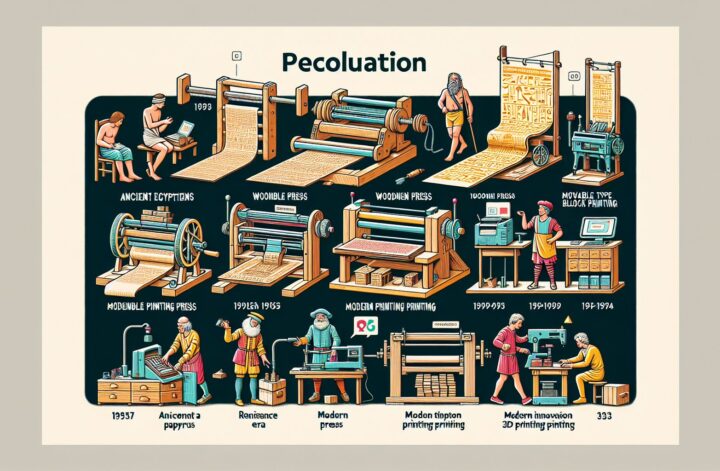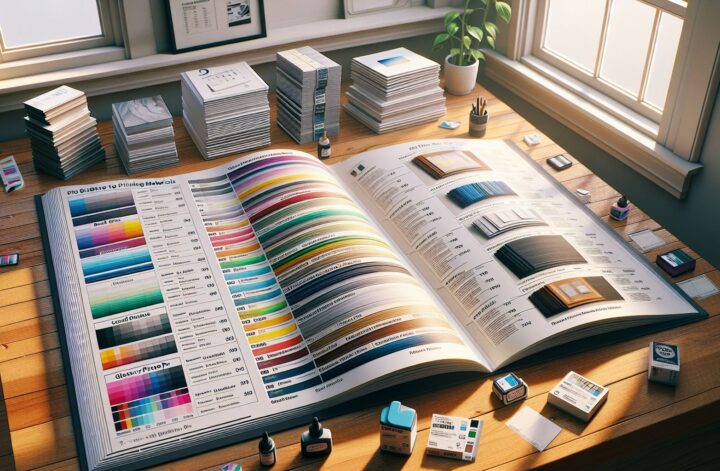Printing has been an essential tool for disseminating information and artistic expression for centuries. From ancient handwritten scrolls to modern 3D printing, the materials used in printing have evolved drastically. In this blog post, we will explore the fascinating history and advancements of printing materials that have revolutionized the way we communicate, learn, and create.
Introduction: A Brief History of Printing
Printing, in its most primitive form, can be traced back to ancient civilizations such as the Egyptians, who used papyrus as a medium for writing. Papyrus, a plant-based material, was made by weaving together thin strips of the papyrus plant’s stem and allowed for relatively portable scrolls.
However, it was the invention of paper in China during the Han Dynasty (206 BCE – 220 CE) that truly revolutionized the world of printing. Paper, made from the pulp of plant fibers, quickly gained popularity due to its versatility and ease of production.
In the 15th century, Johannes Gutenberg’s introduction of the movable type printing press in Europe marked a significant milestone in printing history. Gutenberg’s method used metal type pieces that could be rearranged and reused to print multiple copies of the same text. This leap forward in printing technology paved the way for mass production and dissemination of books, playing a vital role in the Renaissance and the spread of knowledge.
The Rise of Modern Printing Materials
1. Ink and Pigments
Ink has always been the lifeblood of any printing process. The earliest inks were made from natural materials like carbon black or various plant-based dyes. However, these inks were not very vibrant and often faded over time.
During the Renaissance, advancements in pigment manufacturing led to the creation of more durable inks. Pigments such as ochre, vermilion, and ultramarine were ground into fine particles and mixed with binders like oil or egg yolk to create long-lasting and vibrant colors. This improvement in ink quality played a significant role in the explosion of printed materials during this period.
Today, modern printing inks are composed of a variety of substances, including pigments, solvents, resins, and additives. These inks are formulated to meet the specific requirements of different printing techniques, whether it be offset printing, flexography, or digital printing.
2. Paper and Substrates
The invention of paper opened up a world of possibilities in the field of printing. Traditional paper was made by extracting cellulose fibers from plants, such as bamboo, cotton, or flax, and then pressing them into thin sheets.
With the industrial revolution came significant advancements in paper production. The invention of the Fourdrinier machine in the early 19th century allowed for continuous paper manufacturing, resulting in increased efficiency and lower costs. The process involved pouring a slurry of pulp onto a moving wire mesh, where the water drained away, leaving behind a continuous sheet of paper.
In recent decades, the rise of digital printing has led to the development of specialized papers and substrates. Coated papers, for example, have a clay or polymer layer that enhances print quality and reproduces fine details more accurately. Synthetic substrates, such as vinyl or polyester, offer durability and water resistance, making them suitable for outdoor signage and other applications.
3. Photographic and Digital Materials
The invention of the camera in the early 19th century revolutionized the world of printing by allowing the capture of real-life images. The earliest photographic materials, such as daguerreotypes and tintypes, used metal plates coated with light-sensitive chemicals.
As photography evolved, new materials were introduced. Glass plates replaced metal, making the process more accessible to the masses. In the 20th century, flexible film made of cellulose nitrate or cellulose acetate became the standard, allowing for easier handling and development.
The digital revolution in recent decades has transformed printing by eliminating the need for physical film. Digital cameras and computer software now allow for the direct capture and manipulation of images. Digital printers, capable of reproducing an extensive range of colors and resolutions, have become the go-to technology for photographic printing.
The Advent of 3D Printing
While traditional printing techniques have undergone significant developments, perhaps one of the most revolutionary advancements in recent years is 3D printing. Also known as additive manufacturing, 3D printing allows the creation of three-dimensional objects layer by layer, based on a digital model.
Initially, 3D printing mostly used plastics, such as acrylonitrile butadiene styrene (ABS) and polylactic acid (PLA), as the primary printing materials. These materials, when heated and extruded through a nozzle, solidify to form the desired shape. As the technology progressed, more advanced materials, like metal alloys and ceramics, became viable options for 3D printing.
The range of printable materials expanded even further with the introduction of bioprinting, a specialized field of 3D printing that focuses on using living cells and tissue-like materials. Bioprinting shows promising applications in medicine, including the ability to 3D print organs, tissues, and implants.
Conclusion: From Past to Future
Printing materials have come a long way since the days of papyrus scrolls and metal type pieces. From the humble invention of paper to the digital revolution and the rise of 3D printing, each advancement has pushed the boundaries of what is possible in the world of printing.
As technology continues to evolve, new printing materials will emerge, allowing for more exceptional detail, durability, and functionality. Whether in the form of vibrant inks, specialized substrates, or groundbreaking 3D printing materials, these advancements will undoubtedly shape the future of printing, further expanding the frontiers of human creativity and innovation.
So, the next time you hold a printed document or marvel at a 3D-printed object, take a moment to appreciate the incredible journey that printing materials have traveled throughout history and the incredible potential that lies ahead.


